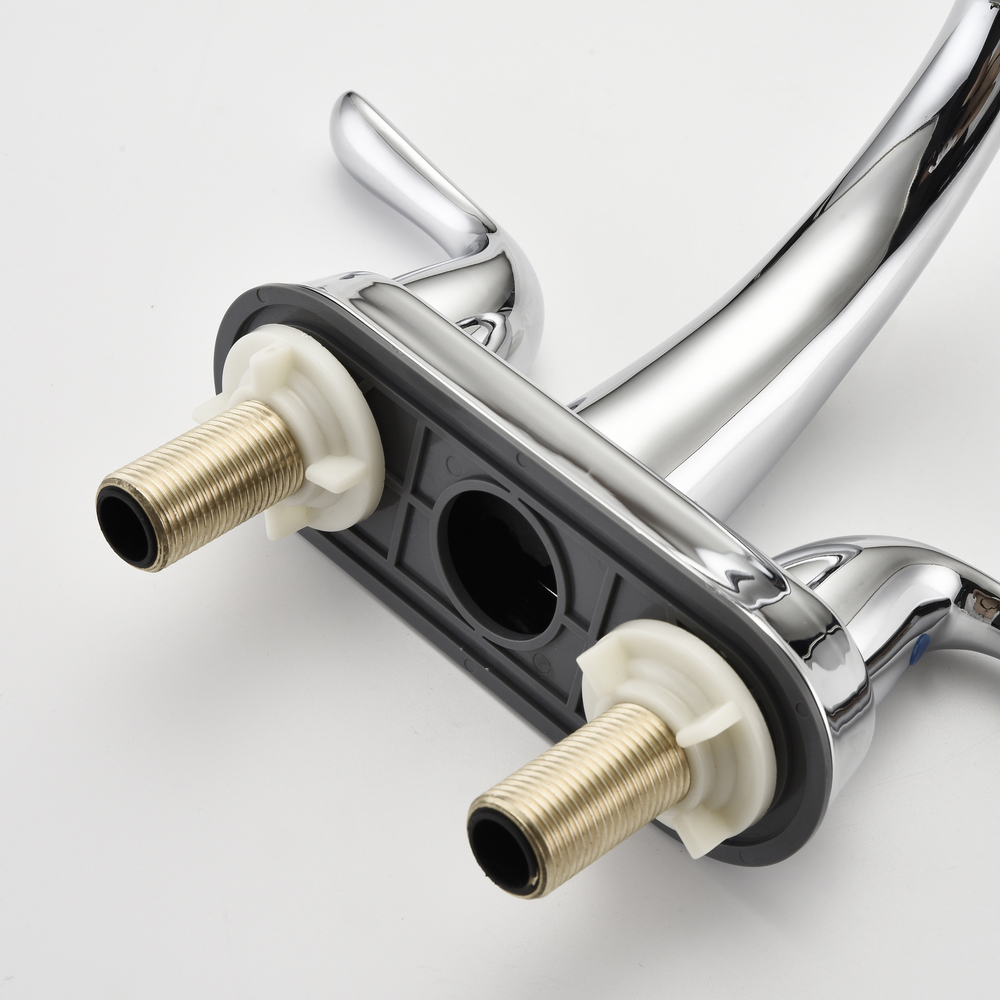Views: 0 Author: Site Editor Publish Time: 2024-09-05 Origin: Site
When choosing between single-handle and double-handle faucets, it’s essential to understand how each type functions, their benefits, and drawbacks. Here's a breakdown of their key differences:

---
#Single Handle Faucets
*Definition:
A single-handle faucet uses one lever or knob to control both the water temperature and flow. Moving the handle side-to-side adjusts temperature, while lifting or lowering it controls the water flow.

*Pros:
1. Ease of Use: One-handle operation makes it simple to adjust both the temperature and flow with one motion.
2. Space-Saving: Single-handle faucets have a more compact design, ideal for small or minimalist bathrooms and kitchens.
3. Quick Installation: With only one handle and usually fewer components, installation is typically faster and easier.
4. Sleek Design: Single-handle faucets often have a more modern, streamlined look, appealing to contemporary design styles.

*Cons:
1. Less Precision: Controlling both temperature and flow with one handle can make it harder to fine-tune the water temperature compared to a two-handle faucet.
2. Limited Repair Options: If the handle breaks, the whole faucet may need replacement or more complex repairs, since it controls all functions.
---

#Double Handle Faucets
Definition:
Double-handle faucets have two separate handles—one for hot water and one for cold water. This allows for individual control of water temperature and flow from each source.

Pros:
1. Precise Temperature Control: Having two handles allows for more precise adjustment of the water temperature, giving you better control.
2. Classic Aesthetic: Double-handle faucets are often associated with traditional or vintage design styles, which can add charm to kitchens and bathrooms.
3. Separate Hot and Cold Control: If one handle breaks, the other can still function independently, allowing for easier repair or replacement of just one handle.

Cons:
1. More Complex Installation: Installing a double-handle faucet requires more effort, as there are two water supply lines and more components.
2. Takes Up More Space: The need for two handles makes these faucets larger and more suitable for spacious sinks or countertops.
3. Less Convenient: You have to use both handles to adjust the water temperature and flow, which can be more time-consuming than a single-handle faucet.
---

#*Differences Between Single Handle and Double Handle Faucets
1. Control:
- Single Handle: Controls both temperature and flow with one lever.
- Double Handle: Allows for individual control of hot and cold water.
2. Design:
- Single Handle: Modern and compact, suitable for minimalist and contemporary designs.
- Double Handle: More traditional, often found in classic or vintage-style settings.
3. Installation:
- Single Handle: Easier and quicker to install.
- Double Handle: More complicated installation due to additional components.
4. Space Requirements:
- Single Handle: Requires less space, suitable for small countertops.
- Double Handle: Takes up more room, best for larger sinks or areas with more space.
5. Convenience:
- Single Handle: Easier to use, adjust temperature and flow quickly.
- Double Handle: Provides greater precision but takes more time to adjust both handles.

---
#Final Thoughts
The choice between a single-handle and double-handle faucet ultimately comes down to your preferences in design, functionality, and convenience. Single-handle faucets are sleek, modern, and space-saving, making them perfect for contemporary settings, while double-handle faucets offer classic charm and better control over water temperature, ideal for traditional designs.
